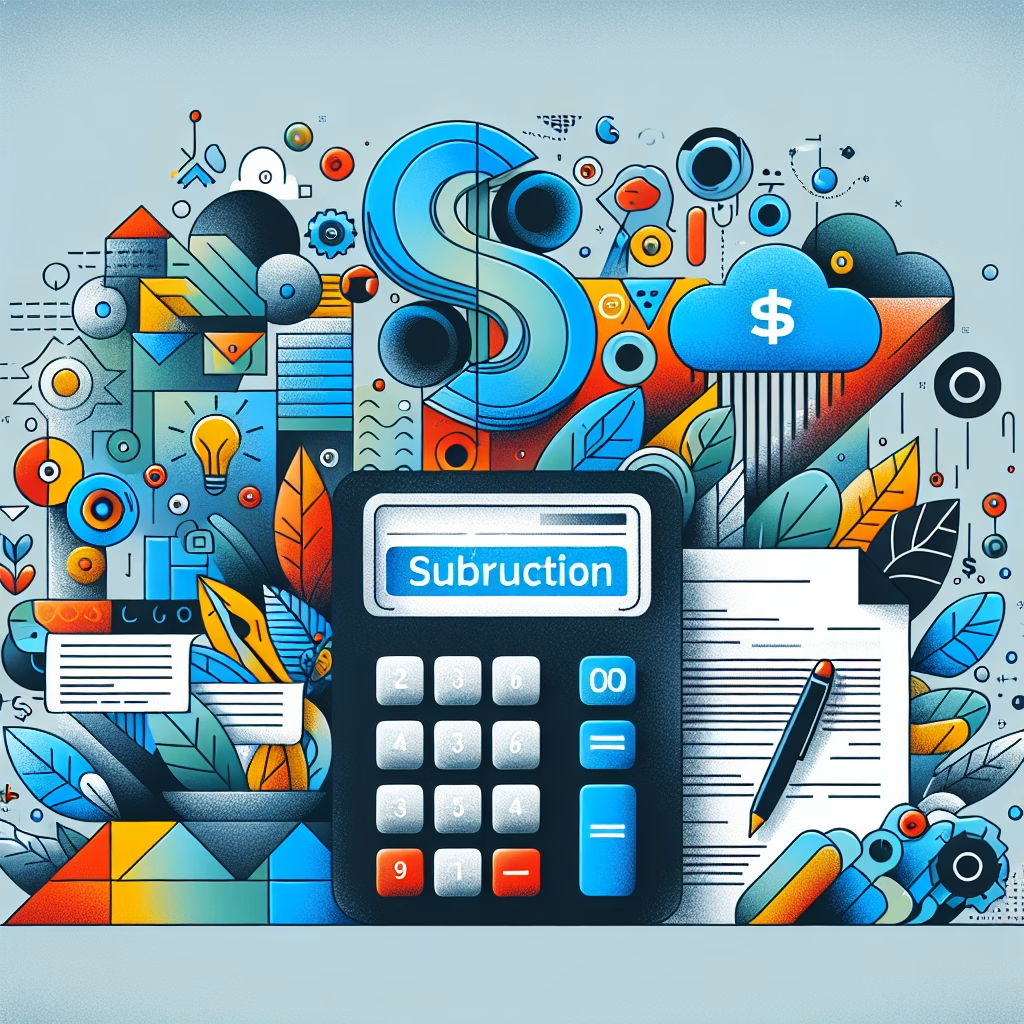Deducting Software Subscriptions For Design Work
Article Summary
Deducting software subscriptions for design work directly impacts freelance designers, creative agencies, and businesses relying on digital tools to generate income. Legitimate deductions reduce taxable income, but improper claims risk IRS audits, penalties, and interest. The Tax Cuts and Jobs Act (TCJA) eliminated unreimbursed employee expense deductions federally, making this exclusively relevant to self-employed professionals and businesses post-2017. Key challenges include proving “ordinary and necessary” use under IRS Section 162, documenting business-purpose allocation for mixed-use tools (e.g., Adobe Creative Cloud), and navigating state variations where employee deductions may still apply.
What This Means for You:
- Immediate Action: Categorize subscriptions by business-use percentage and retain dated payment records.
- Financial Risks: Disallowed deductions due to inadequate documentation may trigger reassessments + 20% accuracy penalties.
- Costs Involved: Deduct 100% of subscriptions used >50% for business; prorate if personal use exceeds 49%.
- Long-Term Strategy: Implement quarterly usage logs and digital receipt tracking to streamline audits.
Explained: Deducting Software Subscriptions For Design Work
Under IRS guidelines, a tax write-off for design software subscriptions must meet Section 162(a)‘s “ordinary and necessary”test: the expense must be common in the design industry and directly tied to income generation. Federally, deductions are disallowed for W-2 employees but permitted for self-employed filers (Schedule C), partnerships (Form 1065), S-corps (Form 1120-S), and C-corps (Form 1120). State rules vary—e.g., California conforms to federal treatment, while Pennsylvania partially allows employee deductions if unreimbursed by employers.
At the federal level, subscriptions must be incurred within the tax year claimed. Prepaid multi-year licenses require amortization under IRC Section 461 unless the 12-month rule applies (services benefiting ≤12 months). Cloud-based tools (e.g., Canva, Figma) are deductible as business expenses, while perpetual licenses may qualify for Section 179 depreciation if treated as purchased software.
Deducting Software Subscriptions For Design Work Principles:
The “ordinary and necessary” standard (Treas. Reg. 1.162-1) mandates that design software must be standard within your field (e.g., AutoCAD for architects) and essential for deliverables. Subscriptions used for both freelance/client projects and personal activities require strict apportionment. For example, using Photoshop 70% for client branding and 30% for personal photography allows only 70% deduction. Insufficient documentation risks full disallowance during audits.
Mixed-use challenges intensify with bundled services (e.g., Adobe Creative Cloud’s 20+ apps). The IRS requires “reasonable” allocation methods, such as time-tracking logs or project-based calculations. Designers working from home may face tighter scrutiny if subscriptions overlap with hobby activities. Proactive measures include using separate accounts for business tools or subscribing under a business entity.
Standard Deduction vs. Itemized Deductions:
Software subscription deductions are claimed as business expenses, unrelated to itemized deductions on Schedule A. Self-employed individuals deduct costs directly on Schedule C, reducing self-employment tax (15.3%) and income tax. Businesses expense subscriptions via Form 1120/1065, bypassing the standard deduction entirely. W-2 employees cannot deduct these costs federally post-TCJA but might in states like New York under NY Tax Law § 615, requiring separate state itemization.
For 2023, the federal standard deduction is $13,850 (single), $27,700 (married filing jointly). Since design software deductions are business expenses, they operate independently of this system. However, sole proprietors must ensure deductions don’t create Schedule C losses exceeding $289,000 (2023) under IRC Section 461(l) if classified as nonpassive.
Types of Categories for Individuals:
Freelancers/Independent Contractors deduct 100% of subscriptions used exclusively for client work on Schedule C (Line 18). Those with Side Hustlers with design income must prove profit motive via 3+ years of profitability or meet IRS Rev. Rul. 55-385 factors (e.g., businesslike recordkeeping).
Employees working in design roles cannot deduct unreimbursed subscriptions federally. Exceptions exist if the employer requires payment under an accountable plan or via state deductions (e.g., Massachusetts Schedule Y). Reimbursed costs are tax-free but require employer substantiation.
Key Business and Small Business Provisions:
For LLCs/S-Corps, subscriptions are deductible as “supplies” or “software expenses” if used for revenue-generating activities. Agencies subscribing on behalf of employees must include these in compensation or expense reimbursements. Startups may capitalize subscriptions under IRC § 195 as startup costs up to $5,000 if amortized over 15 years.
Direct vs. Indirect Costs: Direct subscriptions tied to specific projects (e.g., Figma for UI/UX deliverables) are fully deductible. Indirect tools like project management software (e.g., Asana) require allocation across all business activities. Bundled packages with non-deductible features (e.g., LinkedIn Learning in Adobe’s plan) necessitate proration.
Record-Keeping and Substantiation Requirements:
Per IRS Publication 535, designers must retain receipts, bank statements, and contracts proving payment and business purpose. Subscription invoices must show vendor name, date, amount, and subscription term. For prorated use, weekly time logs or project-based allocations must be retained for 3 years post-filing (7 years if fraud alleged). Digital tools like QuickBooks Self-Employed or MileIQ are recommended for automated tracking.
During audits, insufficient records lead to deductions being disallowed + penalties. Electronically stored records must meet Rev. Proc. 97-22 standards: non-rewriteable formats (PDF), backup systems, and legibility.
Audit Process:
Audits targeting software deductions typically involve IRS Letter 566(C), requesting receipts, usage logs, and proof of business necessity. Auditors apply the “Cohan Rule” sparingly—estimates require credible alternative evidence (e.g., project invoices correlated to subscription periods).
Common triggers include high deductions relative to income, no proration for personal use, or discrepancies between reported expenses and merchant category codes (MCCs) on bank statements.
Choosing a Tax Professional:
Select a CPA or Enrolled Agent with experience in creative industries. Key credentials include IRS Annual Filing Season Program (AFSP) participation and familiarity with Audit Technique Guides for Artists/Designers. Verify expertise in state-specific rules—e.g., California’s disallowance of bitcoin-paid subscriptions lacking USD receipts.
Laws and Regulations Relating To Deducting Software Subscriptions For Design Work:
Federal Authority: IRS Publication 535 (Business Expenses) and Publication 334 (Sole Proprietors) govern deductions. Deductions require “direct nexus” to income under IRC § 162(a), validated in Feldman v. Commissioner (T.C. Memo 2021-73) where unsupported Adobe claims were disallowed.
State Variations: California follows federal law (no employee deductions), while New Jersey allows employee deductions exceeding 2% of AGI (NJSA § 54A:3-2). Section 179 expensing thresholds differ—e.g., Colorado caps software deductions at $1.08M/year (2023).
Audit Defense: Substantiation requirements align with IRC § 274(d), demanding “contemporaneous records” per Sanford v. Commissioner (T.C. Memo 2008-23). Cloud subscriptions are expensed unless customization creates a depreciable asset under Temp. Reg. 1.167(a)-14T(c)(4).
People Also Ask:
Q: Can I deduct my Canva Pro subscription if I’m a freelance graphic designer?
A: Yes, if >50% usage is for client projects. Document via project invoices dated within the subscription period and design proofs created with Canva. Non-exclusive use requires proration.
Q: How do I handle subscriptions paid annually upfront?
A: Deduct the full amount if the subscription period is ≤12 months and ends within the tax year (per the 12-month rule). Multi-year prepayments must be amortized monthly.
Q: Are employee design software costs deductible in any states?
A: Yes—e.g., Arkansas allows unreimbursed employee expenses if ≥2% of federal AGI (AR Code § 26-51-404). Pennsylvania permits deductions for “certified” job-required tools.
Q: What if my employer partially reimburses my Adobe subscription?
A: Only the unreimbursed portion is deductible where allowed (e.g., state returns). Reimbursements via accountable plans are tax-free but must not exceed documented expenses.
Q: Can startups deduct software subscriptions before earning revenue?
A: Yes, but rules differ. Pre-revenue subscriptions are startup costs under IRC § 195, deductible up to $5,000 in the first year, with the remainder amortized.
Extra Information:
1. IRS Publication 535 (Business Expenses): Details “ordinary and necessary” standards for software deductions. Link: irs.gov/pub/irs-pdf/p535.pdf
2. California FTB Publication 1001 (Deductible Expenses): Confirms alignment with federal rules for self-employed designers. Link: ftb.ca.gov/forms/2022/2022-1001.pdf
3. AICPA Audit Guide: Creative Industries: Offers best practices for substantiating design-related deductions. Link: aicpa.org
Expert Opinion:
Precisely tracking software usage and segregating personal activities is non-negotiable for maximizing legitimate deductions while avoiding penalties. Design professionals should prioritize quarterly reconciliations and consult state-specific statutes, as undetected noncompliance can compound liabilities across multiple filing years. Engaging a tax advisor with niche expertise in creative fields ensures alignment with evolving audit priorities.
Key Terms:
- Adobe Creative Cloud tax deduction for designers
- Freelance designer software expense IRS rules
- Prorating business use of design software subscriptions
- Schedule C digital tools write-off strategies
- State-specific employee software deduction laws
- Substantiating mixed-use Adobe license deductions
- Self-employed graphic design tax deductions 2023
*featured image sourced by DallE-3





